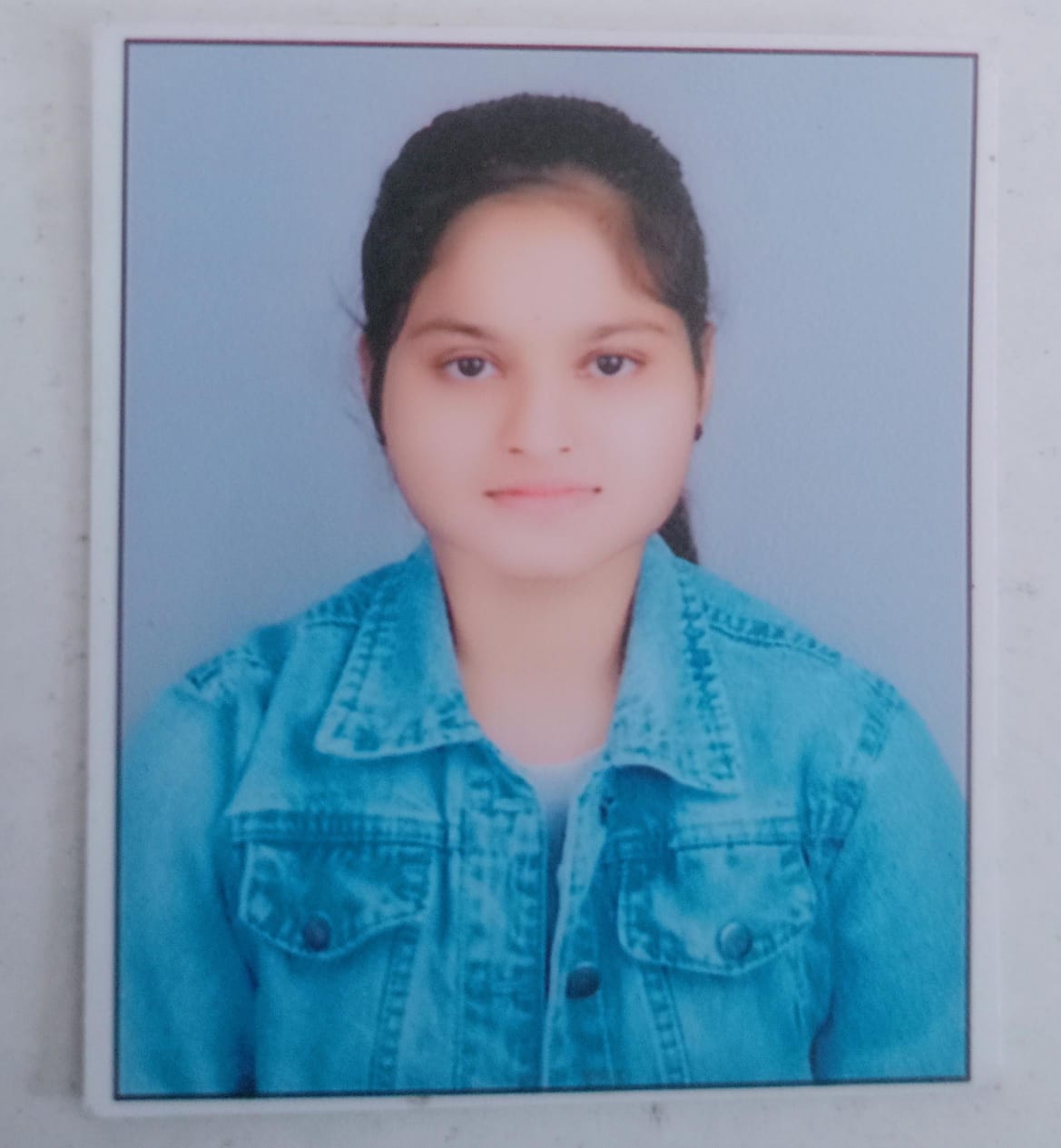Breast Cancer (BC) is a carcinoma of breast tissues, the major recurrent cancer in women and also the foremost cause of death with approximate 5 million annual deaths worldwide. Globally, women are diagnosed with breast cancer (BC) more often than any other malignancy. Four molecular subtypes of this heterogeneous disease luminal A, luminal B, HER2, and triple-negative breast cancer (TNBC) can be distinguished based on the expression of the progesterone and oestrogen receptors, as well as the overexpression of the human epidermal growth factor receptor 2 (HER2). Endocrine and anti- HER2 medicines, which target these receptors, are the current personalised therapy for BC. These treatments, together with radiation and chemotherapy, can have serious side effects and cause patients to become resistant to the drugs. Furthermore, there are no established therapies for TNBC. Therefore, it is essential to have a deeper understanding of how new medications are developed that are more targeted and efficient in treating each BC subgroup.
Breast cancer, Dendrimers,Drug targeting,Hydrogels, micelles
4. Nanotechnology- based on the novel drug delivery:-
- Micelles:-
Colloidal particles known as polymeric micelles (PMs) are created by conjugating water-soluble polymers with long-chain fatty acids, phospholipids, and other surfactants. Chemotherapeutic medicines that are insoluble in water are delivered using micellar technology. Paul Ehrlich was the one who originally suggested using them to deliver drugs to sick cells specifically. Micelles gather at tumours with inadequate blood flow, improving permeability and retention while lengthening the half-life of anticancer drugs.(25) It has been demonstrated that they can inhibit P-gp efflux, function via receptor-mediated endocytosis, and raise intracellular drug concentrations in MCF-7/doxorubicin-resistant cells, resulting in increased cytotoxicity.(26, 27) Furthermore, breast adenocarcinomas were treated with artificial immunological micelles, which are composed of antibodies attached to their surface. Anti-HER-2 monoclonal antibody (mAb), which was produced via antibody-conjugated lysosomal P (LA-co-TMCC)-g-PEG-furan micelles, was used to treat HER-2-positive breast cancer.(28) Use of anti-HER-2 antibody complex micellar formulation in HER-2-positive and HER-2-negative cells has shown great efficacy of taxol compared to basic lipid-based protein.(29) Compared to standard medications that are undergoing Phase I and II clinical trials, the Genexol-PM response rate was found to be 58.5% in another study examining the usage of paclitaxel PM formulation in patients with metastatic breast cancer. Nevertheless, in Phases I and II of SK-BR-3 cells, antibody-decorated NPs demonstrated cellular absorption that was 53.4% and 38.6% greater, respectively, than that of plain micelles.(30) formulation in HER-2-positive and HER-2-negative cells has shown high efficacy of taxol compared to simple lipid-based protein.(29) In another study of the use of paclitaxel PM formulation in metastatic breast cancer patients, the Genexol-PM response rate was observed to be 58.5% compared to plain drugs that are in clinical trial Phases I and II. However, in SK-BR-3 cells, antibody-decorated NPs have shown 53.4% and 38.6% higher cellular uptake than the plain micelles in Phases I and II, respectively.(30).
- Dendrimers:-
Dendrimers are a class of low polydispersity index, heavily branching macromolecules. Vogtle originally presented dendrimer-based nanotechnology platforms for medication delivery in 1978.(31) Dendrimers’ pharmacokinetics and biocompatibility are predictable and controllable, just like those of other nanocarriers. There are numerous drug platforms that have been synthesized as delivery vehicles such as polyether-hydroxylamine (PEHAM), polyamidoamine (PAMAM), polyesteramine, polypropylene mine, and polyglycerol.(32) An evaluation of the cationic PAMAM-NH2 (G0–G4) dendrimers’ biopermeability across biological membranes for oral drug delivery showed that endocytosis and paracellular pathways were the means by which they traversed the membrane.(33, 34)PEGylating improved the dendrimer’s size and water solubility, which enhanced its retention and bio distribution properties. Numerous studies have demonstrated a substantial correlation between dendrimers end and cell toxicity. Proton-decorated amines, ethylene diamine ligands from benzyloxycarbonyl or tert-butoxycarbonyl protecting groups, or dansyl fluorescent labels are the surface functional groups of dendrimers. Drug-resistant MCF-7 cells amass the doxorubicin-containing polyion complex micelle in their nuclei, and it is also thought to have a strong ant proliferative effect on the targeted tumour.(35) Low-generation (G0, G1, and G2) PAMAM-like polymers were used to test the in vitro cytotoxicity of MCF-7 breast cancer cells. (35) Dendrimers-drug conjugate, on the other hand, has several benefits over drug-encapsulated systems due to its antineoplastic agent and covalent attachment to the peripheral groups of the dendrimers. Doxorubicin-G4-PAMAM complexes were encapsulated into liposomes for local delivery in breast cancer. Compared to the solo dendrimers, these exhibited more activity towards the MDA-MB435 breast cells after being formed with HEPC.(32). Therefore, the most effective way to deliver NPs and treat cancer cells may involve using dendrimers-based NPs to transport medications into the targeted location of malignant cells.
- Liposomes :-
Liposomes are spherical vesicle micro particles that contain single or multiple bilayered membrane structures and were first described in 1965. Their size varies from 50–200 nm and they have a tendency to accumulate in tumor cells with an enhanced permeability and retention. Liposomes are classified based on size and composition and influenced by several factors such as bilayered fluidity, surface charge, surface hydration, and methods of preparation.(36) Liposomes have been reported to encapsulate lipophilic and hydrophobic drugs which are stable, nontoxic, biocompatible, biodegradable, and non-immunogenic.(37) Moreover, liposomes are reported to play a role in direct inhibition of P-gp by anionic membrane lipids. A previous study on Rhodamine retention using P-gp and BCRP substrate in breast cancer cell line MCF-7 showed that liposome encapsulation was increased in MCF-7/P-gp cells compared to MCF-7/wild-type cells.(38)Liposomes are reported as an effective delivery system for siRNA- or oligonucleotide-based therapy, and liposome-based drug formulations are currently used in clinical protocols.(39) The encapsulation of drugs in liposomes reduces the toxicity through bio distribution. The therapeutic application of liposomes as a drug carrier for the delivery of paclitaxel has also been evaluated in human ovarian cancer.(40,41) Due to their small size and prolonged circulation, liposomes (including PEGylated liposomes) can provide protection from mononuclear phagocytes. PEGylated liposomes formulation with NPs coated on the surface using polyethylene glycol (PEG) improved the efficacy of drug delivery to target cells.(42) Yang et al reported that PEGylated formulation of paclitaxel increased the half-life compared to conventional liposomes formulation.(43)The combinations of doxorubicin and cyclophosphamide utilizing non-PEGylated liposomes were used for the treatment of metastatic breast cancer.(44) Moreover, liposome-conjugated antibody that overexpresses the HER-2 has been developed and reported as delivering 22-fold more calcein to mammary epithelial cells.(45)The synergistic effects of combined drug delivery of quercetin and vincristine through liposomes were reported for treatment of
ER-negative breast cancer.(46)
- Carbon Nanotubes: -
The remarkable properties of graphitic carbon tubes at the molecular level are known as carbon nanotubes. Carbon nanotubes have recently emerged as a practical substitute and efficient method of transporting pharmaceuticals. To deliver medications, proteins, nucleic acids, and bioactive peptides to particular cells, they can be functionalised or derivatised. The ability of single walled carbon nanotubes (SWNTs) to cross cell membranes, their low toxicity, and lack of immunogenicity make them interesting for site-specific intracellular drug delivery. (47) Single-walled carbon nanotubes, or SWCNTs, may be able to selectively heat malignant tissue for microwave hyperthermia therapy and enhance the dielectric difference between malignant and healthy tissue for the purpose of microwave breast cancer diagnostics. In order to bind methotrexate to multi-walled carbon nanotubes, a number of cleavable linkers containing ammonium functional groups have been employed recently. The new nano bio-hybrid conjugates demonstrated enhanced internalisation into human breast cancer cells with reduced detrimental activity towards healthy cells. Additionally, the HER2 IgY-SWNT complex has been generated to enable the detection and selective destruction of HER2-expressing SK-BR-3 cells and HER2-negative MCF-7 cancer cells.Furthermore, this research demonstrated that cancer cell death might transpire in the absence of the cancer cells' internalisation of SWNTs. In order to induce cell death, multiwalled carbon nanotubes conjugated to a chain protein have been synthesised using reconstituted ricin. Furthermore, it was attached to HER-2 once more to form the MWNTsRTA-HER2 complex, which made it possible to target breast cancer cells specifically. By combining the transport capabilities of carbon nanotubes with functional proteins, new and exciting drug delivery methods, including cancer treatment, may be developed. Bucky paper-loaded MWNTs have also been developed to demonstrate the bucky paper's potential as an antimetastatic agent. Bucky paper was discovered to inhibit the in vitro proliferation of human colorectal, breast, and leukemic cancer cell lines.(49) Bucky paper has no effect on the viability and in vitro proliferation of human cutaneous fibroblasts and normal human artery smooth muscle cells. Antisense mycoligonucleotides have been added to multi-walled carbon nanotubes (dMNTs) modified with polyamidoamine dendrimers. Through the down-regulation of the expression of the c-myc gene and C-Myc protein, developed conjugates have shown the considerable efficacy in MCF-7 breast cancer cell lines. SWNTs coupled with integrin alpha(v)beta (3) monoclonal antibodies have also been created to enhance the absorption of breast cancer cells specifically. (50)
- Gold nanoparticles:-
Chemotherapy for a number of malignancies uses GNPs. They go throughout the tumour cells because of their selectivity and small size (about 130 nm). In addition to being a probe for antimicrobial drugs and transmission electron microscopy, GNP coating serves as a biomarker for the diagnosis of cancer. The most popular technique for producing GNP is the one that uses the Brust-Schiffrin method and the citrate reduction of gold in water.(51) When GNPs were conjugated to transferrin molecules in breast cancer cells, the conjugation resulted in a greater absorption of the bound transferrin molecules by the cells than the free molecules.PEG-conjugated liposomes (52) were employed in the administration of anticancer drugs. (53) Balakrishnan et al. used AuNPs-Qu-5 to specifically target the EGFR/VEGFR-2 signalling pathway in breast cancer, and they reported on the pathway's function in preventing breast cancer cell motility, invasion, angiogenesis, and metastasis. This group has investigated the considerable suppression of several proteins, including vimentin, N-cadherin, p-GSK3β, Akt, Snail, Slug, and p-PI3K, when treated with AuNPs-Qu-5.The prognosis of breast cancer can be predicted by the use of histidine-rich glycoprotein RNA-AuNPs, a diagnostic marker with 90% sensitivity and specificity, according to Eissa et al.'s investigation of 120 patient samples for ER, PR, and HER-2 status.(55) Another report showed that triple-negative breast cancer MDA-MB-231 cells were inhibited by phytochemical compounds such as gallic acid capped with GNPs.(56)
5. Therapies:-
Breast cancer is treated in several ways. It depends on the kind of breast cancer and how far it has spread. People with breast cancer often get more than one kind of treatment.
Surgery:-
Surgeries for the treatment
- Lumpectomy: This surgical procedure removes small glands that are encircled by surrounding breast tissues.
- Mastectomy: Depending on the need, this major surgery entails removing the breasts, as well as the lobules, nipple, areola, chest wall, ducts, fatty cells, and lymph nodes in the armpit.
- Sentinel Node Biopsy: This procedure removes cancer cells that have invaded the lymph node.
- Axillary Lymph Node Dissection: This procedure removes a large number of the armpit’s lymph nodes if the sentinel nodes are cancerous.
- Cosmetic Dentistry Surgery: After the breast is removed for cancer treatment, the best part of the body is replaced to make the patient look as natural as possible.
Chemotherapy:-
- Chemotherapy plays an important Role in limiting the growth of tumors.
- It is administered through the mouth.
- The medications get to the blood and limit the growth of malignant cells.
- The medication is also injected right into the region with cancerous expansion.
Radiotherapy:-
- Radiotherapy is required to restrict the growth of more cancer cells.
- 3 to 5 sessions per week is required for 3 to 6 months of radiotherapy
- Breast cancer treatment is performed after lumpectomy.
- Chest wall radiation treatment is performed after mastectomy.
- An elevated dose of radiation for Breast boost is given following the surgical removal of tumors in the breast.
- Lymph node radiation treatment is done for cancer cells that have reached the lymph nodes have been ruined. .
Hormone Therapy:-
- This therapy is used for treating breast cancers that are sensitive to hormones.
- If for some reason the patient is not able to undergo surgery, chemotherapy or radiotherapy subsequently hormone treatment is still the sole method of providing relief.
- This could last up to five decades.(57)
- Causes:- (58,59)
When aberrant cells in your breast divide and proliferate, breast cancer develops. However, specialists are unsure of the precise reason why this process starts in the first place.On the other hand, research suggests that there are a number of risk factors that could raise your risk of breast cancer. Among them are:
-
- Age. Being 55 years or older significantly raises the risk of breast cancer.
- Family history and genetics. Having close family members, such as parents or siblings, who have been diagnosed with breast cancer increases your own risk. About 5% to 10% of breast cancer cases are linked to inherited genetic factors, which can be identified through testing.
- Gender: The likelihood of developing breast cancer is significantly higher in women compared to men.
- Alcohol Consumption: Studies suggest that drinking alcohol can raise the risk of specific breast cancer types.
- Smoking. Tobacco use has been linked to many different types of cancer, including breast cancer.
- Body Weight: Obesity is associated with a greater risk of developing breast cancer and experiencing recurrences.
- Previous Radiation Therapy: Those who have received radiation treatment, especially to the chest, neck, or head, have an elevated risk for breast cancer.
- Use of Hormone Replacement Therapy: Individuals undergoing HRT may have an increased risk of being diagnosed with breast cancer.
There are many other factors that can increase your chances of developing breast cancer.
- Current Novel Targeted Approaches Of Breast Cancer:-
Surgery to remove the tumour is the first line of treatment for breast cancer in its early stages. Women have always had to decide between breast conserving surgery (BCS), which entails a lumpectomy followed by radiation, and mastectomy with or without reconstruction. Sentinel lymph node biopsy (SLNB) is done concurrently with tumour excision for invasive breast cancers and DCIS in specific cases (large, grade 3, or micro-invasive disease). In contemporary practice, axillary lymph node dissection (AxLND) is rarely recommended as a preliminary indicator of lymph node status. According to standard of care (SoC), the main cancer must be totally excised, necessitating an evaluation of the surgical margins. Similarly, if an SLNB is carried out, the existence of metastatic malignancy is determined by comprehensive pathologic examination, which includes serial step sectioning and immunohistochemistry staining (IHC). The sufficiency of surgical treatment and the requirement for extra steps to guarantee surgical therapy optimisation depend on the margin status as well as the identification and measurement of nodal disease load. Nodal status, tumor size, tumor features, and choice of surgery will define additional adjuvant therapies include chemotherapy, radiotherapy, hormone therapy, and immunotherapy.
After a mastectomy, assessing margins is the easiest. Wide margins are typically attained with whole breast ectomy, with the exception of cases when the tumour is near the skin or chest wall. When the pectoralis fascia is removed in the later instance, a distinct deep edge is typically the outcome. This biologic barrier is rarely broken down in breast tumours that are in their early stages. Even though more locally advanced tumours can pierce the pectoralis major muscle, this does not indicate that the chest wall is involved and does not advance the patient. If needed, muscle can be readily excised to clear this space. The surface edge is frequently more difficult when there is a blurry line separating tissue in their breasts from subcutaneous fat. This has gotten worse with the trend towards mastectomies that spare skin. Additionally, a positive margin on final pathology necessitating re-excision and running the risk of exposing a tissue expander can complicate the trend towards rapid reconstructions. Thin flaps are frequently made in an effort to prevent positive superficial margins, which increases the danger of skin necrosis and loss and complicates or even delays SoC adjuvant therapy. The surgical team has to carefully weigh the pros and cons of both excellent oncologic surgery and cosmetic results. Developing new methods and/or technologies to evaluate flap viability and margins would assist to resolve some of these issues. Margin-negative lumpectomy is necessary for BCS. Decades of discussion have gone into determining the margin’s size. While some centres deem “no tumour on ink” to be sufficient, others want the tumour to have at least a 2-3mm negative margin surrounding it. To guarantee minimal local recurrence rates, the margins should be tumor-free regardless of the extent 6. An additional area of continuous attention has been the evaluation of these margins. The surgeon strikes a compromise between cosmesis and the lumpectomy’s size and suitability. A positive/close margin necessitates another surgical procedure which delays ongoing therapy, causes the patient additional stress, and has a large added expense to breast cancer care. Improved real-time margin assessment techniques may reduce the need for additional surgeries, enhance cosmesis, and prevent repeat procedures.
In order to stage the axilla, SLNB has emerged as the preferred strategy among SoC. Injection site, timing, and use of radiotracer with or without blue dye are some of the specific variations in procedure between centres. In any case, a comprehensive analysis of the detected SLN can establish whether metastatic disease is present or not, but more significantly, it can establish the severity of the illness. While observed, isolated tumour cells (less than 0.2 mm) are not regarded as N1 illness. If there is a T1 tumour present, the disease is still classified as stage 1b even with micrometastases (0.2–2 mm) and is classified as N1mic. According to the number and position of the positive nodes, macro-metastases (>2mm) are staged as N1-3 (AJCC Staging Manual, 7th edition). The previous SoC requirement for AxLND for any N1 illness (including N1mic) is changing (61) based on recently released data and NCCN guidelines. Patients who are receiving BCS and match the Z-11 criteria can currently choose not to use AxLND. This naturally raises the question of whether AxLND is actually beneficial for other individuals undergoing mastectomies and who have minimal nodal disease loads. Given that the current standard practice involves performing axillary lymph node dissection (AxLND) for node-positive disease following sentinel lymph node biopsy (SLNB), except in the narrow Z-11 group, there is significant interest in identifying metastatic disease during SLNB itself. This would allow for AxLND to be completed in the same procedure, reducing the need for additional waiting, patient stress, or a second surgery for those requiring full axillary staging. Various techniques, such as touch preps, frozen sections, and real-time PCR methods, have been explored with mixed results. Implementing rapid and precise methods could greatly benefit patients who need AxLND.
Over the past 20 to 30 years, there has been a notable decline in breast cancer-related mortality, which can be attributed to advancements in screening and treatment approaches. When paired with radiation therapy, breast cancer surgery (BCS) yields survival rates comparable to those after mastectomy, with 6-9% local recurrence at 5 years and 14–20% at 20 years (62). When compared to late symptomatic discovery, early detection of an asymptomatic local recurrence by appropriate surveillance techniques, such as breast imaging, improves long-term survival (63, 64, 65). Therefore sensitive, non-invasive, and cost-effective surveillance strategies to detect early local recurrence are necessary.
After curative treatment for breast cancer, mammography is the cornerstone of surveillance imaging. It can detect 18%–80% of contralateral metachronous disease and 8%–50% of ipsilateral recurrences (66). Following breast conserving therapy, the majority of treatment guidelines, including those from the American Society for Clinical Oncology and the NCCN, recommend yearly mammography (67,68). Since there are insufficient randomised controlled trials proving mammography’s value in a surveillance environment, this suggestion is based on expert opinion. According to most guidelines, patients should get their first mammogram following treatment “one year following the first mammography that results in a diagnosis, but no earlier than six months following definitive radiation therapy” (68). The ideal time frame for mammographic follow-up is still up for debate, despite the fact that experts concur that routine surveillance mammography improves long-term outcomes for women with early-stage breast cancer. Biannual mammography may be beneficial for two to five years after treatment, according to certain studies, although annual mammography is recommended after breast conserving therapy by the majority of major treatment guidelines, including ASCO and NCCN (69, 70). A meta-analysis and one retrospective trial on surveillance mammography revealed no advantages of 6-month interval screening mammography, however a recent retrospective single institution assessment indicated that five years of biannual mammographic surveillance may be beneficial (66,71,72,73). The usefulness of breast ultrasonography, positron-emission computed tomography (PET/CT), or magnetic resonance imaging (MRI) in the context of breast cancer surveillance has not been subjected to any randomised clinical trials. Most of the material on each modality is written in the past. Therefore, none of these modalities can be conclusively supported as the principal imaging modality for surveillance (74). Finding the best imaging modality for surveillance imaging is still a difficult task. As of right now, there isn’t a perfect single modality for image surveillance that is non-invasive, affordable, and strikes the right mix of specificity and sensitivity. The post-operative and post-radiation alterations of breast conservation therapy reduce mammography’s sensitivity and specificity when compared to a regular screening population, despite the fact that mammography can identify 25–45% of recurrences (75). Therefore, research into the potential of additional breast imaging modalities as a screening aid in addition to mammography and clinical examination is ongoing.
Numerous investigations have shown that breast MRI has a high sensitivity and specificity for detecting local recurrence (76,77, 78).Additionally, it has a high degree of sensitivity, specificity, and accuracy when separating recurring tumours from post-operative scars (79). Although breast MRI is a better option than other modalities when used alone, it is more costly, requires more resources, and is not as comfortable as mammography or ultrasound (79, 80). The usage of breast MRI for women’s follow-up following breast conserving therapy varies greatly. In women with a history of breast cancer and a suspicion of recurrence, MRI can be helpful when clinical, mammographic, or sonographic results are unclear, according to the American College of Radiology’s practice guidelines for breast MR (74) Similarly, a panel from the American Cancer Society determined that MR screening following breast conservation therapy is not warranted based only on the elevated risk of contralateral metachronous illness or local recurrence brought on by a personal history of breast cancer (81). The use of breast MR imaging in this population is supported by a retrospective research that found 12% of women screened with a personal history of breast cancer had cancer detected (76). A separate study by Berg, et al demonstrated that supplemental MRI was less likely to prompt unnecessary recall or biopsy in women with a personal history of breast cancer than in those without a personal history of breast cancer (80) The choice of adjunct surveillance with breast MRI is still under investigation and further studies for optimal patient selection are needed.
- Other Imaging Modalities:-
The role that ultrasonography plays in surveillance is rather loosely defined in the literature. A few retrospective investigations have shown that ultrasound is highly sensitive in identifying malignant tumours in the breast, axilla, and supraclavicular areas. However, no discernible change in therapy or overall survival in any patient population could be seen in these investigations. Ultrasound is becoming a critical component of multimodality surveillance strategies, particularly for symptomatic patients. Comparing yearly mammography versus additional ultrasonography for asymptomatic persons with a personal history of breast cancer led to a 34% increase in the diagnosis of invasive cancer. Moreover, women having a personal history of breast cancer had a reduced false-negative rate than women without (80). Compared to the current standard of practice, PET/CT gives better accuracy for recurrence detection. However, its primary use in surveillance is as an auxiliary imaging technique due to the increased cost and radiation exposure. There is no major use for breast-specific gamma imaging in surveillance.
- Post-Mastectomy Imaging:-
Finding the right algorithm and modality for surveillance in the post-mastectomy population is a second major problem in imaging surveillance. There are no established standards for follow-up in individuals undergoing mastectomy, whether or not reconstruction is included.Patients who have had mastectomy have a 5% to 30% chance of chest wall recurrence (82,83). Case studies and retrospective reviews show that surveillance mammography can identify local recurrence in women who have had breast reconstruction after mastectomy, but there is insufficient data to definitively recommend against routine imaging surveillance in this specific patient population (82, 83, 84). Algorithms for surveillance imaging are currently institution-specific.
- Medical Oncology Aspects:
Current NCCN guidelines recommend yearly mammography and a history and physical exam twice a year for five years after chemotherapy and radiation therapy. They conclude that routine tumour markers, intensive follow-up, and additional imaging modalities in an asymptomatic patient do not improve overall survival. In 2012, Rojas et al. Conducted a Cochrane review of multicenter randomised controlled trials evaluating various follow-up approaches in patients with stage I, II, or III breast cancer who had achieved disease-free status following therapy. The study’s conclusion was that ordering extra tests as symptoms appear offers no discernible survival advantage versus stricter surveillance with shorter follow-up intervals. A physical examination every three months for two years, then again every three months for three years, a chest x-ray and bone scan every six months, and an annual mammography were examples of intense follow-up. These were compared to the same physical examination and mammography schedule with no further testing. Even though the intensive follow-up group saw recurrences more frequently, this had no bearing on the kind of treatment provided or the projected 10-year mortality rates (85,86). When compared to self-breast exams and mammography, a 2007 systematic review of the evidence questioned whether a clinical exam performed by a specialist increases survival following primary therapy. The study’s finding was that, when compared to a general practitioner’s clinical examination, patient detection and mammography were linked to better survival. This study also noted that, perhaps as a result of advancements in technology and improved quality control, there has been a rise in the frequency of curable relapses identified by mammography in recent years (87,88). Although it is outside the purview of this review, other options for the early diagnosis of breast cancer recurrence will be examined in later publications.
- Case study of metastatic breast cancer:-
An aggressive type of breast cancer known as metastatic breast cancer occurs when cancer cells migrate to other body organs. Secondary or Stage IV breast cancer is another term for this [1]. According to the Cancer Research UK study conducted in July 2006, 99% of women are affected by breast cancer, which accounts for 15% of all cancer diagnoses. Triple-negative breast cancers are defined as ER/PgR/HER2–negative tumours, accounting for 99% of cases. There are reports that this illness is a big public health concern. In particular, the sickness is becoming more prevalent in developed nations, with 91000 deaths in Europe alone each year as a result.(1989)Cancer development may also be influenced by other factors such as the environment, medications, food pollutants, and oestrogenic endocrine disruptors. (90)many risk factors have been identified to be connected with breast cancer, such as age, estrogen treatment after menopause, breast feeding, age at the first pregnancy, age at menopause, environment, stress, and nutrition. Another significant risk factor is a family history of breast cancer, which may indicate a genetic propensity for the condition (91). More significant hereditary factors need to be taken into account at the molecular level in order to have optimistic outcomes for breast cancer detection and treatment. Segawa et al. (92) have found significant genetic abnormalities linked to cancer, including the activation of protooncogenes, the inactivation of tumour suppressor genes, and the inactivation of DNA repair genes. Breast cancer is the most prevalent type of cancer among women worldwide, with a cure rate of around 70–80% for those diagnosed at an early, non-metastatic stage. In contrast, advanced breast cancer that has metastasized to distant organs is considered incurable with existing treatment options. Molecularly, breast cancer is highly heterogeneous, characterized by factors such as the activation of the human epidermal growth factor receptor 2 (HER2, produced by the ERBB2 gene), the presence of hormone receptors (including estrogen and progesterone), and BRCA mutations. Treatment approaches are tailored based on these molecular subtypes and involve a multidisciplinary strategy that integrates locoregional interventions, such as surgery and radiation, with systemic therapies. Systemic treatment options include endocrine therapy for hormone receptor-positive tumors, chemotherapy, anti-HER2 treatments for HER2-positive cancers, bone-modifying agents, and poly(ADP-ribose) polymerase inhibitors for patients with BRCA mutations, as well as emerging immunotherapies. Future therapeutic strategies are expected to focus on personalizing treatment and adjusting its intensity based on tumor biology and initial responses. Additionally, ensuring equitable access to these advancements globally remains a significant challenge in the future management of breast cancer.
- Prevention
Reduction of breast cancer risk for women at average risk
Making changes in your daily life may help reduce your risk of breast cancer. Try to:


 Nikita Andhale * 1
Nikita Andhale * 1
 Eknath Unde 2
Eknath Unde 2
 Monali Ghuge 1
Monali Ghuge 1
 Sonali Ghuge 1
Sonali Ghuge 1
 Jayashri Gavande 1
Jayashri Gavande 1
 Neha Jadhav 1
Neha Jadhav 1
 Urmilesh Jha. D. 2
Urmilesh Jha. D. 2
 Dr. Avinash Mansuk 2
Dr. Avinash Mansuk 2
 10.5281/zenodo.15109810
10.5281/zenodo.15109810